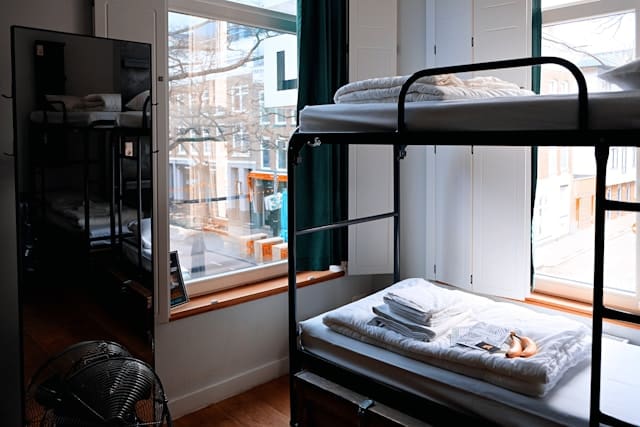
Making the move from on-campus dorm life to your own apartment or house is a major milestone in your academic experience. This transition into Off-Campus Student Living brings new freedom, but also a fresh set of challenges and responsibilities. Preparation and awareness can help ensure your off-campus move is memorable for the right reasons. Many students opt for ASU off campus housing to enjoy increased autonomy, more space, and the chance to immerse themselves in local culture.
Whether you are sharing an apartment with friends or looking for a quieter solo retreat, off-campus living invites new routines, budgeting strategies, and interactions with your community. Embracing these changes thoughtfully can lead to a positive, balanced, and successful college journey beyond the dorms.
From setting clear expectations with roommates to managing your finances and learning the ins and outs of your new neighborhood, a little planning goes a long way. This guide will walk you through crucial tips and tools to make your transition smooth and rewarding.
Organizational skills, effective communication, and a proactive mindset are your biggest allies. You’ll not only be adjusting to a different lifestyle but also setting yourself up for lifelong habits in independence and self-management.
Setting Roommate Expectations
Success in shared living arrangements often hinges on honest, early communication. Even if you’re living with close friends, take time to address crucial topics before any issues arise:
- Work out a fair and realistic cleaning schedule so daily chores stay manageable.
- Set boundaries for guests, overnight visitors, noise, and the use of shared spaces.
- Decide together how shared expenses—such as utilities, household items, and even internet—will be divided and paid.
It’s helpful to put agreements in writing and revisit and update them as needed. Some universities also provide roommate contract templates or suggestions through their residential services.
Budgeting for Off-Campus Student Living
Moving off campus is often more cost-effective than campus housing, but only with careful planning. According to US News & World Report guidance on calculating the actual cost of living, it’s essential to evaluate all expenses—rent, utilities, transportation, and daily necessities—to ensure the move actually saves money. Here are steps to keep your finances in order:
- Make lists of fixed monthly costs—including rent, utilities, internet, transportation, and insurance.
- Add variable expenses like groceries, cleaning supplies, and discretionary spending.
- Don’t forget a cushion for emergencies or unexpected repairs—aim for a modest emergency fund, even if you can only contribute a little each month.
- Use budgeting tools such as Mint, YNAB, or Splitwise to track where your money goes and how shared expenses are settled.
Regularly reviewing your budget helps you avoid financial stress and build good habits for the future.
Exploring Your New Neighborhood
Settling into a new area doesn’t stop at knowing your address. Spend time learning about the resources and perks your neighborhood offers. According to Investopedia, understanding the key factors that make a good location can help you evaluate your surroundings more effectively and feel more confident about the place you now call home.
- Locate essential amenities such as grocery stores, pharmacies, health clinics, and coffee shops.
- Find the nearest public transit stops and bus routes, as well as bike-friendly roads and parking rules.
- Check out local parks or fitness centers to take breaks, stay active, and recharge.
- Attend neighborhood meetings or regular events, even briefly, if they’re available to meet people and create genuine connections.
Many communities have social media or neighborhood apps that announce events and provide safety updates. This will help you feel more at home while keeping you connected and informed.
Maintaining a Clean Living Space
Keeping your living area organized isn’t just for aesthetics—it supports your health, productivity, and stress levels:
- Coordinate regular cleaning with all roommates so work is shared fairly and nothing is neglected.
- Agree on rules for common areas: avoid letting dishes or laundry pile up, and make cleanup after guests a routine responsibility.
- Perform monthly checks for required maintenance to prevent minor problems from becoming major expenses.
If you’re unsure about renter responsibilities or need more tips on a healthy student lifestyle.
Leveraging Technology for Daily Tasks in Off-Campus Student Living
Modern living offers many digital tools that can make student life easier and your household run more smoothly:
- Smart home devices can automate security, lighting, and climate control schedules for both convenience and safety.
- Robotic vacuums and other automatic cleaning gadgets make regular maintenance less burdensome.
- Grocery, meal-prep, and delivery apps like Instacart or HelloFresh can save time and money when used strategically.
These solutions may require an upfront investment, but they pay off through time savings and reduced stress, letting you focus on academics and a balanced social life.
With preparation, communication, and the right tools, the journey into off-campus living can be one of the best chapters of your college life. Approach each step thoughtfully, and you’ll set yourself up for a supportive, enjoyable home away from home.



